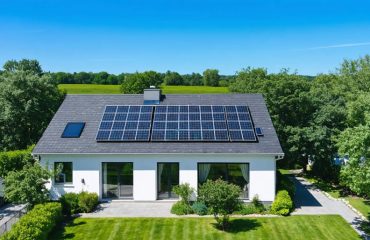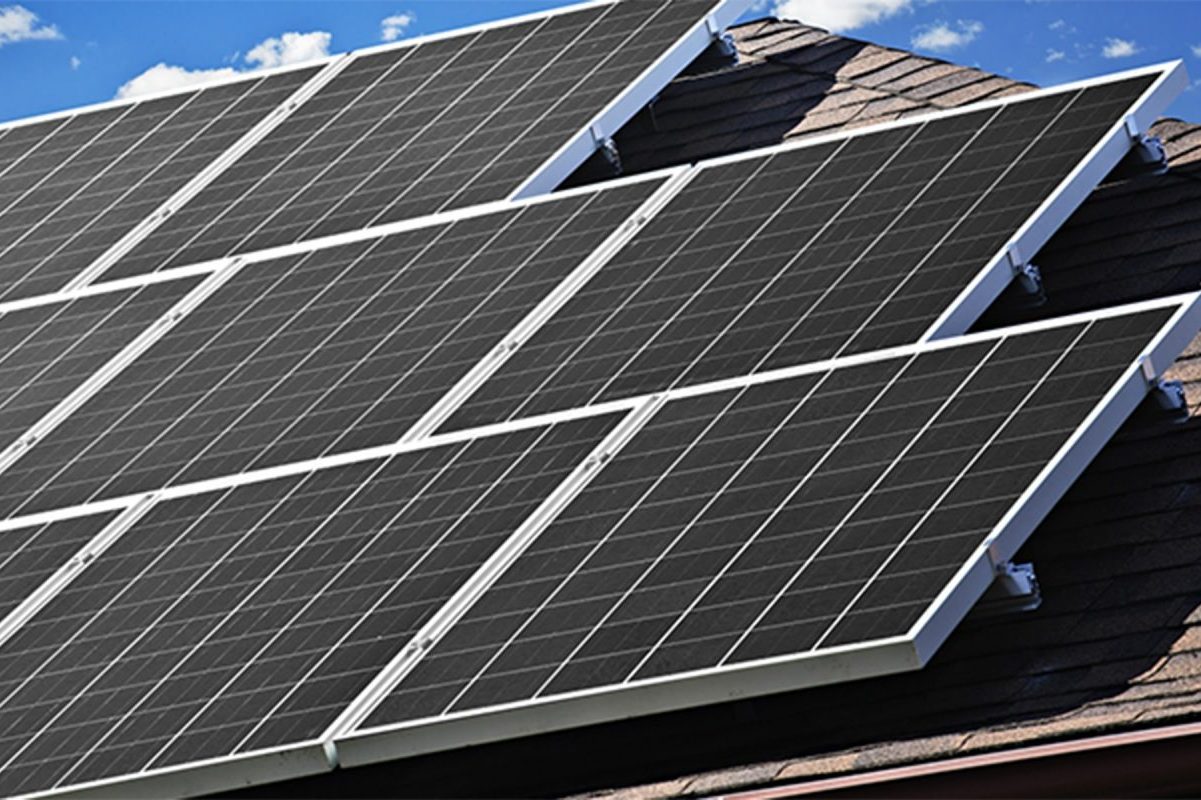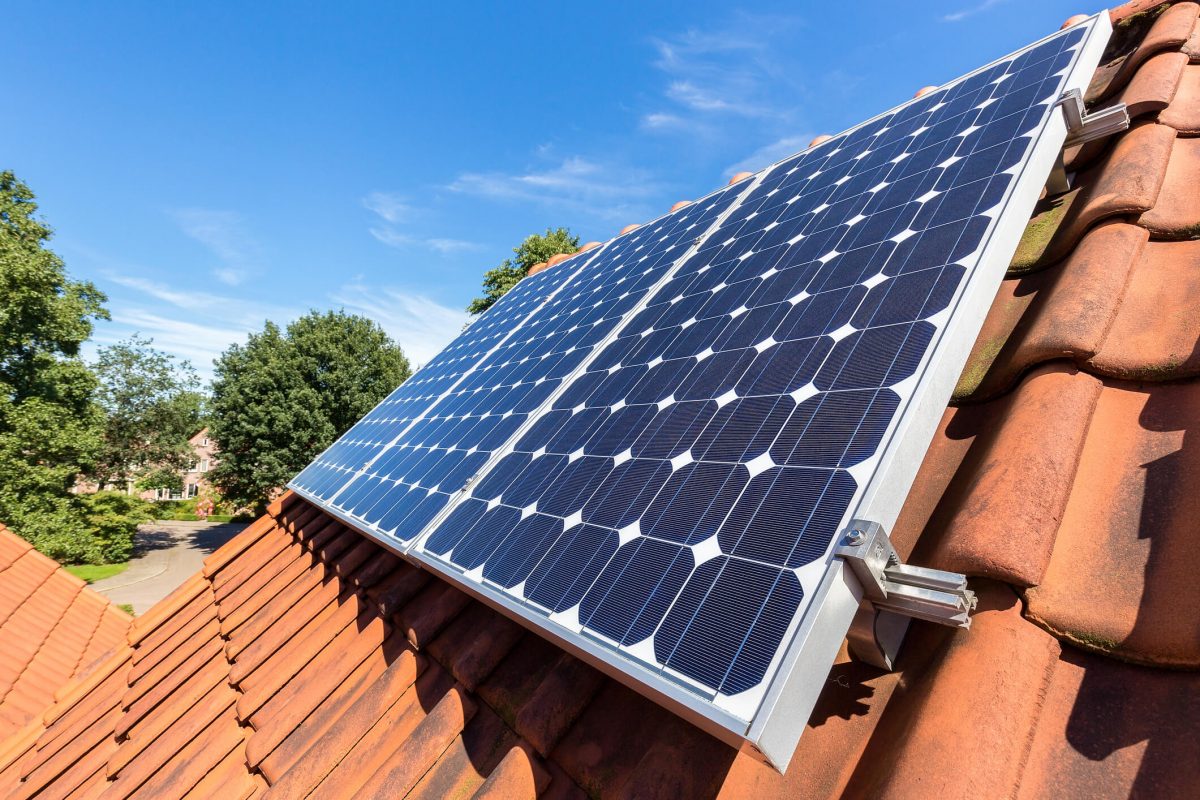Harness the sun’s power and slash your energy bills by asking these crucial questions before installing solar panels:
- Evaluate your home’s solar potential. Assess your roof’s condition, size, angle, and sun exposure to determine if it’s suitable for solar.
- Understand your energy usage. Analyze your current and projected electricity consumption to size your solar array correctly.
- Compare costs and financing options. Get multiple quotes, investigate incentives and rebates, and explore financing methods like leases, loans, or direct purchases.
- Choose a reputable installer. Research solar companies’ experience, certifications, warranties, and customer reviews to ensure a quality installation and reliable support.
By addressing these key technical, financial, and practical considerations upfront, you’ll be empowered to make a smart, confident decision about going solar and reaping the long-term benefits of clean, affordable energy.
Is my home suitable for solar panels?
Before deciding to install solar panels, it’s crucial to assess whether your home is suitable for this renewable energy solution. The first factor to consider is your roof’s orientation. South-facing roofs receive the most sunlight, making them ideal for solar panels. However, east- and west-facing roofs can also work well, albeit with slightly lower efficiency.
Shading is another important aspect to evaluate. Trees, neighboring buildings, or other obstructions that cast shadows on your roof can significantly reduce the effectiveness of solar panels. If your roof is heavily shaded for most of the day, solar may not be the best option for your home.
The condition and material of your roof also play a role in determining its suitability for solar panels. A roof in good condition, without any leaks or structural issues, is essential for a successful installation. Asphalt shingles, metal, and tile roofs are all compatible with solar panels, but some materials may require specialized mounting systems.
Available space on your roof is another key consideration. Solar panels need a certain amount of surface area to generate sufficient electricity for your home. A rough estimate is that you’ll need about 100 square feet of roof space for every kilowatt of solar capacity installed. Keep in mind that obstructions like skylights, chimneys, or vents can limit the available space for panels.
If your roof isn’t suitable for solar, don’t give up just yet. Ground-mounted solar panels are a viable alternative if you have enough space on your property. This option allows for optimal orientation and angle of the panels, potentially increasing their efficiency.
Remember, while these factors are important, they don’t necessarily make or break your home’s suitability for solar. A professional solar installer can conduct a thorough assessment of your property and provide personalized recommendations based on your specific situation. With advancements in solar technology and creative installation solutions, more and more homes are becoming solar-ready every day.
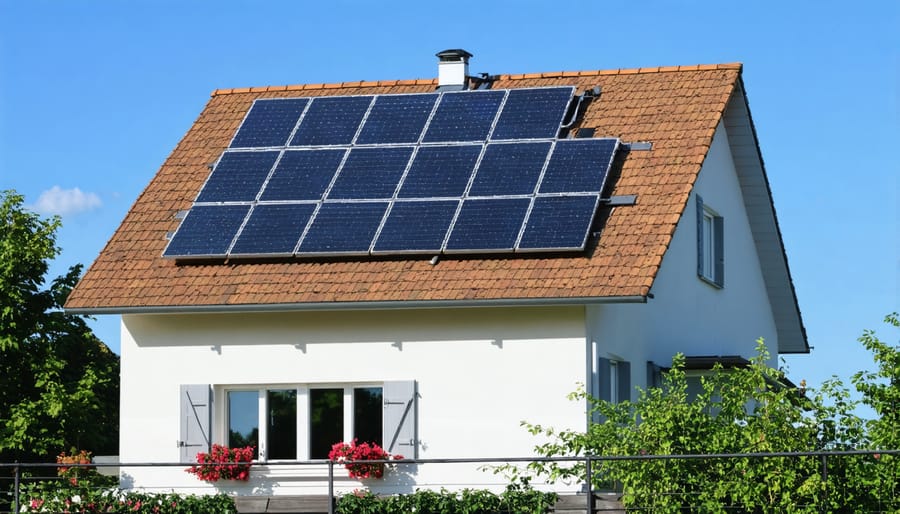

What is the total cost and expected ROI?
Upfront costs
When considering solar panel installation, it’s essential to understand the upfront costs involved. The main expenses include the solar panels themselves, an inverter to convert the DC electricity generated by the panels into usable AC electricity for your home, and the installation labor. The price of solar panels has decreased significantly in recent years, making them more accessible to homeowners. However, the total cost will depend on factors such as the size of your system, your location, and the complexity of the installation. Additionally, you may need to obtain permits from your local government, which can add to the initial expenses. While these upfront costs may seem daunting, it’s important to remember that solar panels can provide long-term savings on your energy bills and increase the value of your home. Many states also offer incentives and tax credits to help offset the initial investment.
Financing and incentives
When it comes to financing your solar panel installation, there are several options available. Many solar companies offer loans or leases, allowing you to spread the cost over time. Additionally, the federal government provides a tax credit that can significantly reduce your upfront investment. As of 2023, the Solar Investment Tax Credit (ITC) stands at 30% of the total installation cost. Check with your state and local government for additional rebates or incentives that may be available in your area. These financing options can make going solar more affordable and accessible, allowing you to start saving on your energy bills sooner. Be sure to compare the terms and conditions of various financing plans to find the one that best suits your needs and budget.
Long-term savings
Installing solar panels can significantly reduce your electricity bills in the long run. While the upfront cost may seem high, the savings on utility bills can add up over time. Most systems have a payback period of 5-15 years, after which the electricity generated is essentially free. Moreover, solar panels can increase your home’s value by up to 4%, making them a smart investment. When considering solar, ask about the estimated savings, payback period, and potential home value increase to determine if it’s a financially sound decision for your household.
What type and size of solar system do I need?
When determining the type and size of solar system you need, the first step is to assess your energy requirements. Evaluate your monthly electricity bills to calculate your average energy consumption. This will help you determine the system size that can effectively offset your energy needs.
Next, consider the different types of solar panels available. Monocrystalline panels are the most efficient, with a sleek, black appearance. They perform well in low-light conditions but come at a higher cost. Polycrystalline panels are less efficient but more affordable, making them a popular choice for homeowners on a budget. Thin-film panels are lightweight and flexible, suitable for unconventional roof types, but they require more space to generate the same amount of power as crystalline panels.
The size of your solar system depends on factors such as your energy consumption, available roof space, and budget. A professional solar installer can help you determine the optimal system size based on these factors. They will consider your roof’s orientation, shading, and local climate to design a system that maximizes energy production.
Typically, a residential solar system ranges from 3 to 10 kilowatts (kW). A 5 kW system is suitable for an average household, generating around 6,000 to 8,000 kilowatt-hours (kWh) per year, depending on the location. However, if you have high energy consumption or want to achieve complete energy independence, you may need a larger system.
Remember, the goal is to find the right balance between your energy needs, available space, and budget. By working with a reputable solar installer and evaluating your options carefully, you can determine the type and size of solar system that best suits your home.
Should I include a solar battery?
When deciding whether to install solar panels, one important consideration is whether to include solar batteries for energy storage. Solar batteries allow you to store excess energy generated during the day for use at night or during power outages. This can provide a significant benefit in terms of energy independence and backup power capabilities.
However, solar batteries do come with additional upfront costs. Depending on the size and type of battery, costs can range from a few thousand to tens of thousands of dollars. While batteries extend the usefulness of your solar panels, it’s important to weigh the added expense against your energy needs and budget.
If your goal is to have a fully off-grid system or reliable backup power during outages, solar batteries are essential. They allow you to store and use your solar energy even when the grid is down. However, if your primary aim is to reduce energy bills, batteries may not be as critical since you can still take advantage of net metering to get credit for excess power sent to the grid.
Ultimately, whether to include solar batteries depends on your specific goals, budget, and energy usage patterns. Consider your priorities in terms of energy independence, backup power, and cost savings to determine if the benefits of batteries justify the added investment for your solar installation.
How do I choose a reputable solar installer?
Choosing a reputable solar installer is crucial for ensuring the long-term success and performance of your solar panel system. Start by looking for licensed contractors with extensive experience in solar installations. Verify their credentials and certifications, such as those from the North American Board of Certified Energy Practitioners (NABCEP), which demonstrates their expertise and commitment to industry best practices.
When comparing solar installers, pay close attention to the warranties they offer on both the equipment and their workmanship. A reliable installer should provide comprehensive coverage for at least 10-25 years on panels and inverters, as well as a warranty on their installation labor. This protects your investment and gives you peace of mind.
Reading customer reviews and testimonials can also provide valuable insights into an installer’s track record and customer service. Look for companies with a history of positive feedback, timely project completion, and responsive post-installation support.
Additionally, consider the quality of the solar panels and components each installer uses. Reputable installers typically work with well-established, tier-one manufacturers known for their product reliability and performance. They should also be able to clearly explain the different options available and help you select the best system for your specific needs and budget.
Finally, trust your instincts and choose an installer that communicates clearly, transparently, and professionally throughout the process. They should take the time to understand your goals, answer your questions, and provide personalized recommendations. By doing your due diligence and selecting a reputable installer, you can ensure a smooth and successful transition to clean, renewable solar energy for your home.
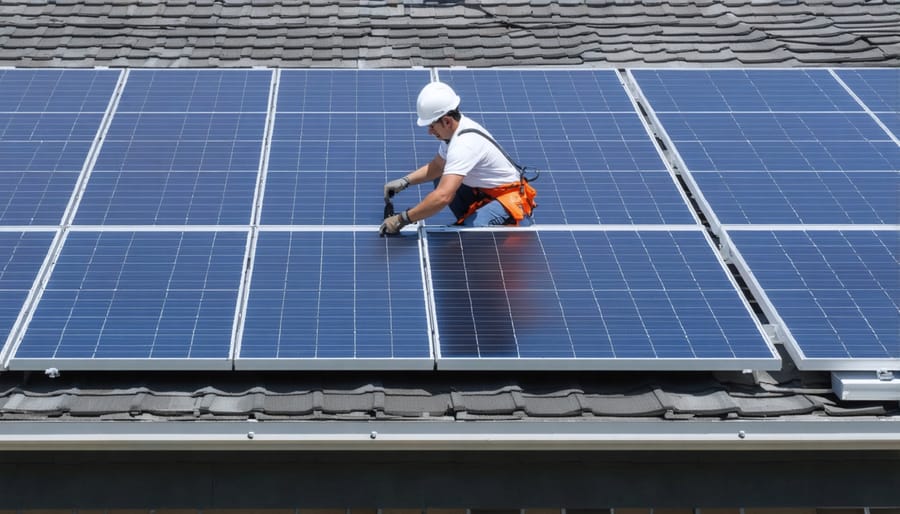
What maintenance is required?
Solar panels are designed to be highly durable and require minimal maintenance needs throughout their lifespan. However, to ensure optimal performance, it’s important to keep the panels clean and free from debris. Regular cleaning, usually a few times a year, can help maintain efficiency. Over time, the inverter, which converts the DC electricity generated by the panels into usable AC electricity, may need to be replaced. Most solar panel systems come with comprehensive warranties that cover performance and equipment, providing peace of mind for homeowners.
What happens if I move?
If you move, you have a few options for your solar panels. You can transfer the system ownership or lease to the new homeowner, allowing them to enjoy the benefits of solar energy. Alternatively, you can remove the panels and reinstall them at your new residence. While this may incur some costs, it allows you to continue benefiting from your investment in solar energy. Be sure to discuss these options with your solar provider and real estate agent to determine the best course of action for your specific situation. With proper planning, moving doesn’t have to be a barrier to going solar.
Conclusion
Installing solar panels is a significant decision that requires careful consideration and thorough research. By asking the right questions and working with experienced professionals, you can ensure that your solar investment pays off both financially and environmentally. Take the time to evaluate your energy needs, understand the costs and incentives, and choose a reputable installer who can guide you through the process. With proper planning and execution, going solar can be a smart choice that not only reduces your carbon footprint but also provides long-term savings on your energy bills. As you embark on this journey towards sustainable living, remember that the benefits of solar power extend beyond your own home – by embracing renewable energy, you are contributing to a cleaner, greener future for generations to come. So, don’t hesitate to ask questions, seek expert advice, and make an informed decision that aligns with your goals and values.



